Poland's Central Clarity: CEO Iwona Sroka, KDPW Group
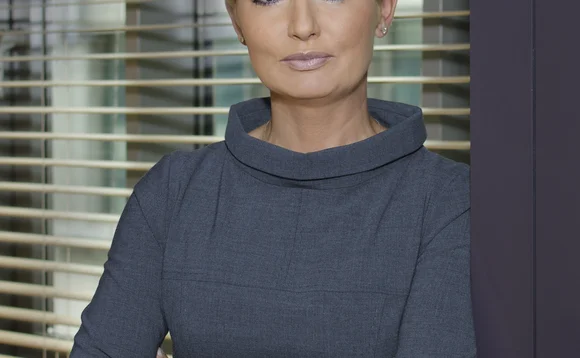
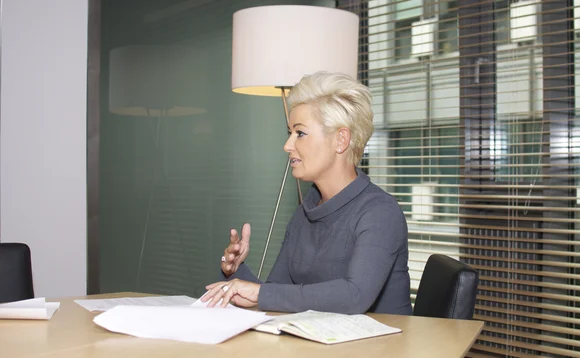
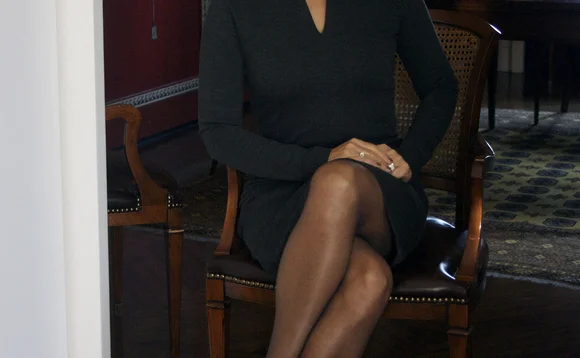
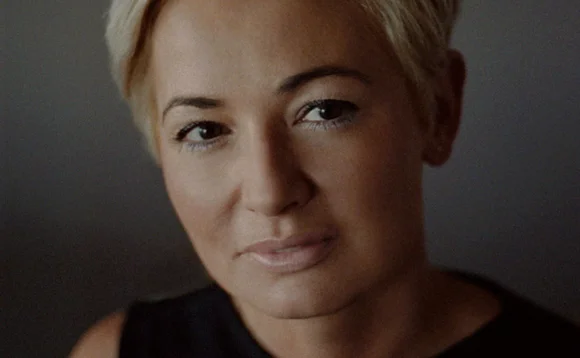
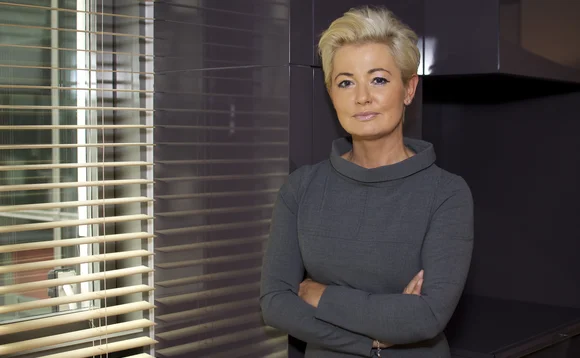
Few authors do irony better than those from Central Europe—and here, art often imitates life. Among the unsubtle ironies accompanying the fall of communism in Poland in 1989 was the fate of the old ruling party’s headquarters: It served for almost 10 years as home of the Warsaw Stock Exchange (WSE) until 2000, when the WSE—today the largest exchange operator in the region—moved to a new complex draped in glass rather than history, a signal to the global finance community that Poland had arrived. In recent years, the exchange has seen among the largest number of initial public offerings (IPOs) of any stock exchange quarter-on-quarter, not only in Europe but also the world. Signal received.
On the back of that success, the WSE has pushed forward with a move to NYSE Technologies’ Universal Trading Platform (UTP), a long-awaited springboard for more sophisticated capital markets here. Much of the action leading up to its implementation earlier this year has been on the WSE center building’s sixth floor, home to KDPW Group—in Polish, Krajowy Depozyt Papierów Wartościowych—the national central securities depository (CSD) and clearinghouse.
Iwona Sroka, KDPW’s CEO and president, advised on many of the moves—both business and technological—that have inspired WSE’s rapid ascent. Now she’s making sure no detail, however small, is overlooked as the exchange’s infrastructure matures.
Local First
Building financial markets surrounded by plains rather than a megalopolis might seem far-fetched, and indeed, wide swaths of Poland can be mistaken for Indiana or Iowa. But geography—look no further than the success of mainstay institutions like the CME Group in Chicago, far from the financial hub of New York—argues otherwise. Even with a little bit of cunning, some timely help from outside, and a lot of hard work, a new trading venue always has to be better front-to-back. But it also has the advantage of starting from scratch.
Sroka knows that better than most. Holder of a doctorate from the Warsaw School of Economics and recently appointed to prime minister Donald Tusk’s Tripartite Commission for Social and Economic Affairs, she is comfortable operating in a whirlwind. The CEO helped lay the foundation for economic life after communism while on the staff with the Ministry of Privatization, before working with several vestiges of the country’s nascent capital markets, ultimately joining the WSE in 2001.
“In the coming decade, we expect to have listed firms large enough so that all European investors and portfolio managers will want to have exposure to them. We always have work to do on economies of scale—everything moves faster as those are achieved—but our goal was never to be as big as the pan-European CCPs. We want to be more effective.”
Academics are known for making things complicated. Sroka is about keeping it simple. By contrast to the exchanges to Poland’s south—which, in 2006, formed the CEE Stock Exchange Group (CEESEG) in a bid to attract foreign liquidity—Sroka believes in a kind of traditional, national centricity for markets in the region. Investing in the technology for multiple settlement platforms—or having to choose a potential loser in the process—is often the most contentious and expensive problem faced in the pursuit of an alternative, she says.
“Our strategy is to promote the local market first, while simultaneously becoming more visible to the international community. That path is easier to navigate than trying to consolidate markets,” Sroka says. “You can create a single trading platform, of course, but under current European rules, it’s impossible to have one regional central securities depository—they remain settled on a national level, and it’s there that the operational differences will stand out.”
After six years in existence, she says, the CEESEG consortium is only one example. “Bourses in Prague and Ljubljana have CSDs with a clearing function, whereas in Vienna you have CCPAustria, separate entirely from the depository that is run by the Oesterreichische Kontrollbank, or OeKB. Negotiating those differences is, practically speaking, very difficult,” Sroka says.
Staying local doesn’t imply insularity, though, so much as reaching out on positive terms. Since 2004, KDPW has forged a bevy of relationships with foreign CSDs to allow for dual listing of equities often issued in neighboring Baltic and eastern states, but also as far afield as Canada and Italy. Those operational links now total 19, with nine maintained directly through KDPW connectivity and the remainder managed indirectly with Clearstream BL, Euroclear, and UniCredit’s custodial bank in Bulgaria. The first step to the latest link, sealed by a memorandum of understanding this June with Russia’s NSD, is viewed as bearing great potential, and, according to Sroka, represents a “symbolic sign.” Moscow and Warsaw have a checkered historical relationship, but each is attracting heightened interest from traders both at home and abroad.
Heady Days
Then, how can that interest be turned into volume? Shortly after her appointment to the role of CEO in 2009, Sroka was in on early discussions about the most important technology development of the WSE’s, and by extension, the legally independent KDPW’s young history: a comprehensive upgrade of the exchange’s trading system.
The electronic-only WSE has never had a trading pit—and therefore KDPW has operated since its inception with solid technology, helping to settle combined equities and corporate-bond transactions of approximately €2.6 trillion ($3.3 trillion) in 2012. About a third of its total staff is dedicated to IT, and multiple members of the management board often oversee technology projects along with vice president and CIO, Slawomir Panasiuk.
The major exchange technology providers have reaped steady successes outfitting emerging markets trading venues in the last decade. But those venues’ long-term viability still hinges on local talent making the nuts and bolts work. When NYSE Technologies’ UTP was chosen over more incremental improvements at the WSE, two ripple effects were immediately created for KDPW, the first being a step-function improvement in equities trading. Sroka’s technology team instantly took center stage during some heady days earlier this year as KDPW prepared to settle and clear, for the sake of market confidence, every last equities transaction made during the trading hours of April 15—the day the UTP was officially migrated in a clean break—with extensive stress-testing undertaken by a team of 32 dedicated IT personnel leading up to the day.
“The new platform can handle 20,000 orders per second, versus about 850 orders per second in our former Warset system, so that represents huge change for us to work with in terms of settlement,” Sroka says. “Latency is cut to under a millisecond, the introduction of algorithmic execution is attracting buy-side firms and brokerage houses catering to individual investors, and enhanced overall system performance should allow market-makers to use bulk or mass quotes, as well as support different classes of instruments,” she says.
Like Clockwork
April’s exercise points out the second, and more complex, effect: Unlike Warset, designed to more fundamental needs with lesser expense, the UTP is outfitted to handle trading in derivatives cleared by a central counterparty (CCP). The rub? Until 2011, Poland had no local clearing mechanism to speak of. So KDPW built one.
A clearing platform must take account of every eventuality, whether market-related or legal. When it is working optimally, the platform isn’t generating a windfall, producing trading signals, or making waves using newfangled hardware. Rather, like clockwork, it is barely visible. For her part, and just as she did in the early days of Polish privatization, Sroka sees the pay-off in the quiet wins—even if, as she points out, they’re still hard work.
“A key factor that determines the competitive advantage of a country or region is the quality of its local infrastructure—we know that in Poland as well as anywhere, and it’s a primary reason we’ve seen continued growth rather than recession,” she says, referring to the billions in Euopean Union-backed public investment the country has won in recent years. “The same goes for an exchange operator or clearinghouse. Infrastructure, security, and quality of service play an absolutely crucial role.”
To start with, offering a wider variety of cleared instruments—single-stock options, interest-rate futures, and non-deliverable commodities are all set to be gradually introduced—implies a fair amount of regulatory heavy lifting.
“Preparing KDPW_CCP to technical standards laid out by the European Market Infrastructure Regulation (EMIR), is certainly a big effort,” Sroka says. “These include forming a risk committee, setting limit thresholds and parameters for members, acquiring the required capital—about 210 million Polish złoty ($62 million) provided by the National Bank of Poland—and finally, having a trade repository for reporting of derivatives contracts, which we were the first in the region to achieve last November, and which is now being certified by the European Securities and Markets Authority (ESMA).”
Meeting faster equities and new derivatives, then harmonizing the UTP and kdpw_stream platforms, has proven a case study in technology implementation—or, more precisely, managing two build-outs simultaneously.
Between them, Sroka says, were tasks ranging from establishing external development and on-site testing environments to producing monthly reports for the joint WSE/KDPW steering committee and reaching out to middleware vendors including MarkitWire, Swift, and other providers from the US, Sweden, Australia and South Africa.
KDPW additionally worked with the WSE’s issuer services division to update corporate actions processes—e.g., dividend, split and reverse split, subscription rights—that affect exchange trading, and completed a panoply of other reconfigurations in-house, including adjustments to native UTP market data feeds, new business continuity protocols, segregating settlement and clearing accounts, and compliance with the ISO 20022 messaging standard, among others. (See Clearing: The Next Hurdle below).
Moving in Sync
Checking those boxes today is still more vital as Sroka looks to the future, predicting where the ground might shift. For example, the Target2–Securities (T2S) cross-border settlement initiative led by the European Central Bank has been in the works for some time, and she says how—or rather when—to support that scheme has proven a crucial question for KDPW.
“Members of our national user group (NUG) have been assessing the option of the Polish market joining since 2010,” she says. “But after a detailed analysis and feasibility assessment of how our IT systems need to be adapted to the T2S requirements for its operator, the Eurosystem, it was decided that investing in the communications infrastructure to settle in a non-local currency doesn’t make sense at present. Obviously, the T2S project marks an important milestone for securities trading in the EU, so it is resolved that we would prepare to join two years prior to officially joining the euro.”
Assuming the trajectory of Poland’s economy and monetary policy remains unchanged, that will likely fall around 2020. Of course, Sroka also recognizes that rising volumes and new listed derivatives—combined with the fact that the UTP has been implemented elsewhere on the Continent—could also attract outside forces to KDPW’s door.
“All the work we’ve done is about competition that our market is certain to face in the next couple years,” she says. “If you look at CEESEG, they had peak trade turnover in 2007. Today, they only have 20 percent of that number on-exchange—the rest has gone over the counter (OTC) or is routed through multilateral trading facilities (MTFs) and cheaper venues. The WSE has to prepare for that new competitive reality, and the same is true for us looking at conceivable entry from EuroCCP, LCH.Clearnet, and SIX X-Clear. So we always have to be thinking about that technically, where to realize savings, and how to be closer to our market participants.”
On an operational level, that comes back to new product offerings to meet demand, accompanied by credibility with regulators and legislators. Negotiated securities lending through KDPW_CCP is on the horizon, expected by 2014, to accompany a proprietary matching engine for repurchase agreements already in place. Meanwhile, government reforms allowing omnibus accounts and short-selling, novation-based fees, and a new cash settlement system introduced by the national bank all suggest that the little things are moving in sync.
Small Is Beautiful
As for sticking close to participants, few know Poland’s investors better than Sroka. Ever a teacher, she’s keen to spread knowledge locally—bringing it to WSE students from graduate courses she holds at the University of Warsaw, even jurying an annual prize for Poland’s best financial journalism—as well as regionally where, for example, KDPW has recently sent staff to Azerbaijan, to provide assistance for Baku’s legal and technology teams. Both are signs of pride earned mostly through patience and careful planning, though also by being technologically one step ahead.
“First was privatization; next was the IPO boom. In the coming decade, we expect to have listed firms large enough so that all European investors and portfolio managers will want to have exposure to them,” Sroka says. “We always have work to do on economies of scale—everything moves faster as those are achieved—but for KDPW, our goal was never to be as big as the pan-European CCPs. We want to be more effective.”
It’s a high bar to set. Given what’s come before, that seems just right.
Clearing: The Next Hurdle
Legal and technological tasks solved during the Warsaw Stock Exchange’s (WSE’s) Universal Trading Platform (UTP) implementation and clearinghouse build-out:
- Elimination of validation of clearing member details and entity account identifiers in brokers’ orders
- A new model of default participants and default clearing accounts
- Introduction of the option of providing account identifiers up to 10 characters long in brokers’ orders, which required the migration of accounts from existing to shorter identifiers in participants’ systems and in KDPW in several rounds selected by participants in 2012
- Changes to the model of halting an exchange member at the request of a clearing member or KDPW_CCP
- Modifications to the rules of processing short-selling hold-and-release messages
- KDPW_CCP taking over, as authorized by the WSE, the obligation to complete trade details including International Securities Identifier Number (ISIN), trade value, expected settlement date, and KDPW trade identifier
- New rules for completing trade identifiers and brokers’ order details in KDPW and KDPW_CCP messages
- Enabling the WSE to cancel trades on the new platform
- Implementation of a new client terminal interacting with UTP where KDPW_CCP can place brokers’ orders directly
- Development of new network infrastructure relying on telecom operators
- Switch to online receipt of exchange market data and trade feeds (handling multiple specific native UTP protocols), real-time verification and completion of instructions, and online distribution of trade confirmations to clearing members
- Handling the complex business continuity plan providing for resumed trading at the WSE’s back-up datacenter in the event of UTP failure at the WSE’s primary datacenter
- Amendments to the KDPW Rules and the KDPW_CCP Rules as well as the detailed rules of operation of KDPW and the detailed clearing rules
- Drafting from scratch the new tripartite agreement between the exchange, KDPW and KDPW_CCP
Only users who have a paid subscription or are part of a corporate subscription are able to print or copy content.
To access these options, along with all other subscription benefits, please contact info@waterstechnology.com or view our subscription options here: https://subscriptions.waterstechnology.com/subscribe
You are currently unable to print this content. Please contact info@waterstechnology.com to find out more.
You are currently unable to copy this content. Please contact info@waterstechnology.com to find out more.
Copyright Infopro Digital Limited. All rights reserved.
As outlined in our terms and conditions, https://www.infopro-digital.com/terms-and-conditions/subscriptions/ (point 2.4), printing is limited to a single copy.
If you would like to purchase additional rights please email info@waterstechnology.com
Copyright Infopro Digital Limited. All rights reserved.
You may share this content using our article tools. As outlined in our terms and conditions, https://www.infopro-digital.com/terms-and-conditions/subscriptions/ (clause 2.4), an Authorised User may only make one copy of the materials for their own personal use. You must also comply with the restrictions in clause 2.5.
If you would like to purchase additional rights please email info@waterstechnology.com
More on Emerging Technologies
BNY inks AI deal with Google, Broadridge moves proxy voting to AWS, Expero delivers ICE market data, and more
The Waters Cooler: TSX Venture Exchange data hits the blockchain, SmartTrade acquires Kace, and garage doors link to cloud costs in this week’s news roundup.
Everyone wants to tokenize the assets. What about the data?
The IMD Wrap: With exchanges moving market data on-chain, Wei-Shen believes there’s a need to standardize licensing agreements.
Google, CME say they’ve proved cloud can support HFT—now what?
After demonstrating in September that ultra-low-latency trading can be facilitated in the cloud, the exchange and tech giant are hoping to see barriers to entry come down, particularly as overnight trading looms.
Waters Wavelength Ep. 342: LexisNexis Risk Solutions’ Sophie Lagouanelle
This week, Sophie Lagouanelle, chief product officer for financial crime compliance at LNRS, joins the podcast to discuss trends in the space moving into 2026.
Citadel Securities, BlackRock, Nasdaq mull tokenized equities’ impact on regulations
An SEC panel of broker-dealers, market-makers and crypto specialists debated the ramifications of a future with tokenized equities.
BlackRock and AccessFintech partner, LSEG collabs with OpenAI, Apex launches Pisces service, and more
The Waters Cooler: CJC launches MDC service, Centreon secures Sixth Street investment, UK bond CT update, and more in this week’s news roundup.
Tokenized assets draw interest, but regulation lags behind
Regulators around the globe are showing increased interest in tokenization, but concretely identifying and implementing guardrails and ground rules for tokenized products has remained slow.
CME, LSEG align on market data licensing in GenAI era
The two major exchanges say they are licensing the use case—not the technology.







